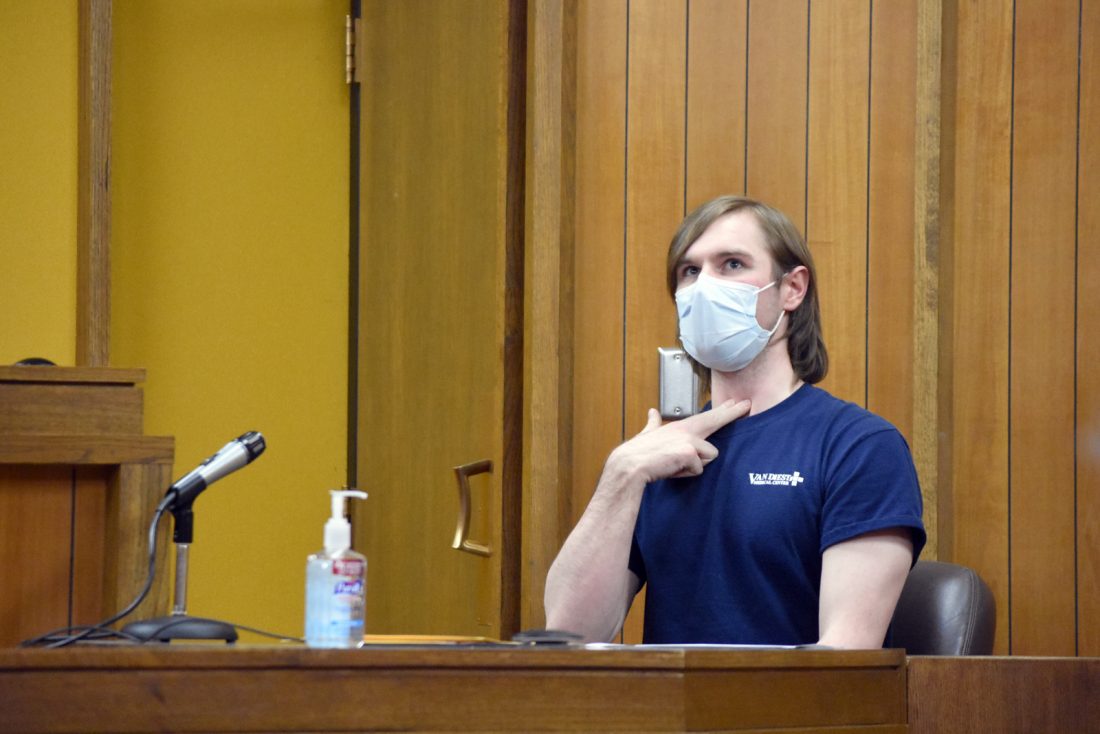Pointing at the paramedic

After watching bodycam footage showing the scene of Zackery Bassett’s apartment the night Andrea Sokolowski died, defense attorneys had a contentious cross examination Friday with perhaps an unlikely witness: the paramedic.
At the center of their flashpoint was a routine medical gesture commonly used to help with intubation: cricoid pressure.
In a simple direct examination from the state, Matt McColley, a paramedic at Van Diest Medical Center, testified to the common practice procedure he performed during resuscitation on Sokolowski in September 2018 after Bassett called 911. But that’s where the simplicity ended.
Sokolowski was declared dead later that night after medical personnel exhausted efforts to revive her. On Thursday, nurse practitioner Jeremy Waldo described her airway as “the most swollen airway I’ve personally ever seen” in 20 years of experience. The airway was so swollen that paramedics were twice unable to intubate her before staff at the hospital experienced similar difficulty.
Waldo said that kind of swelling typically comes from trauma or an allergic reaction.

Bassett is charged with first-degree murder in Sokolowski’s death. Key evidence from the state, yet to be presented, includes the state medical examiner’s report which notes pinpoint hemorrhaging on her face, an indication of strangulation.
Bassett has pleaded not guilty.
“Come on, Andrea,” he shouted as paramedics performed CPR in their living room, visibly upset after an inconsolable 911 call.
Former Webster City Police Officer Phil Queen testified Friday that he believed additional investigation was necessary after visiting with Bassett at the scene of the victim’s death, and notified the chief of police. Queen opted not to arrest Bassett the night Sokolowski was found dead, but notified him that he could later arrest him for being in violation of a no contact order in place between the couple.
Bassett was previously convicted of domestic abuse against Sokolowski and criminal complaints describe a relationship fraught with abuse where she feared for her life, at times.
But at trial, it was McColley who was visibly shaken as the defense took the reigns under cross examination.
Before cross examination, defense attorney Paul Rounds accused him of being coached by the Assistant Attorney General’s office, grilling him outside of the jury’s presence about their prior communications.
In the jury room, McColley hesitantly said the state had previously discussed his testimony and told him that the routine cricoid pressure he applied to Sokolowski’s neck could be construed as a contributing factor to her airway swelling.
“(State attorneys are) the ones that reminded him he put pressure on (the victim’s) neck,” Rounds said, arguing that the jury had a right to know he had been warned his actions could be construed as a cause of injury.
But in front of the jury, a visibly distraught paramedic in uniform deviated slightly from that answer, saying he “assumed” the cricoid pressure would be critical to the defense.
The nervous witness, which state attorneys expected to be finished with after a few minutes on the stand, put his head in his hands as attorneys continued to argue.
“Why would you say ‘assume’ if you actually knew?” Rounds asked.
“I’m just under a lot of stress and didn’t answer definitively as I should have,” McColley replied, a characterization the judge agreed with in further discussions.




